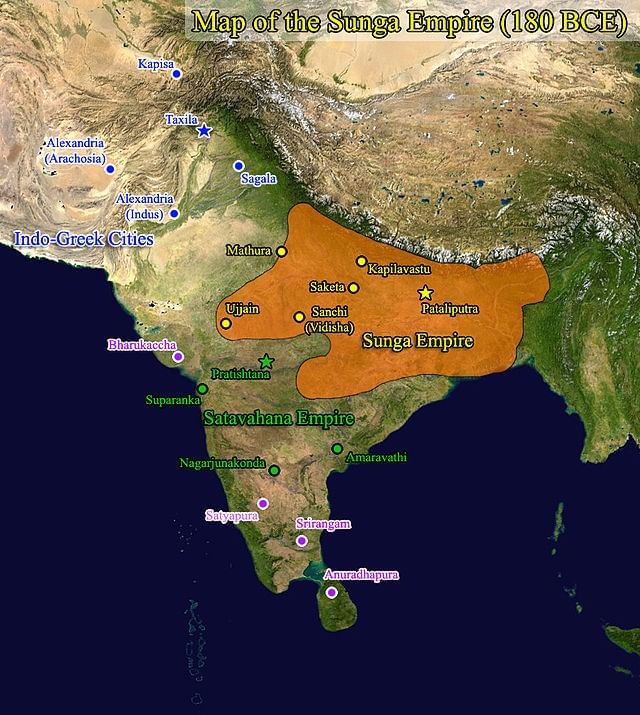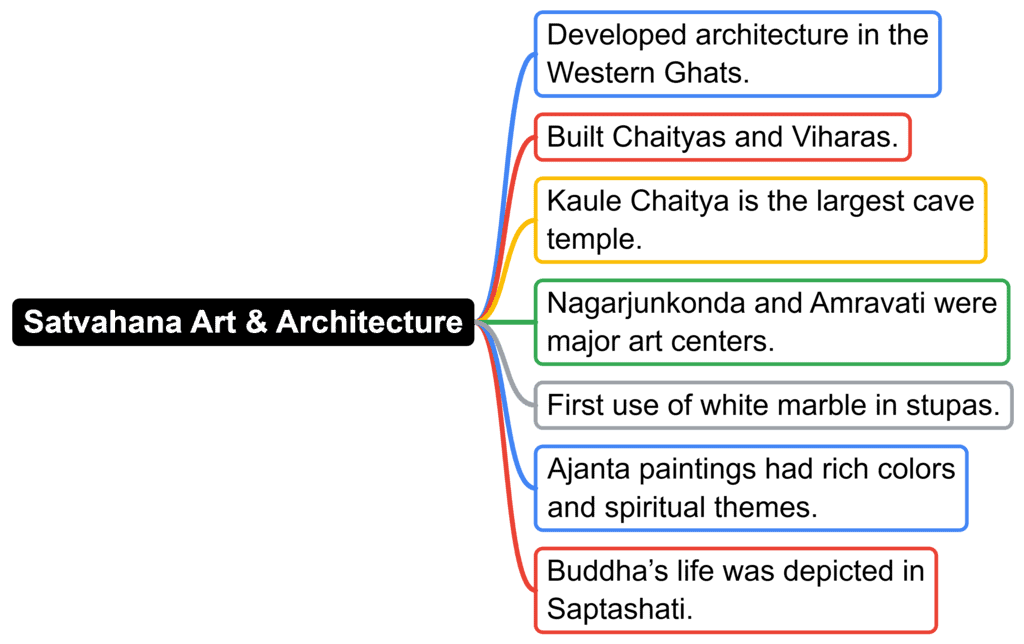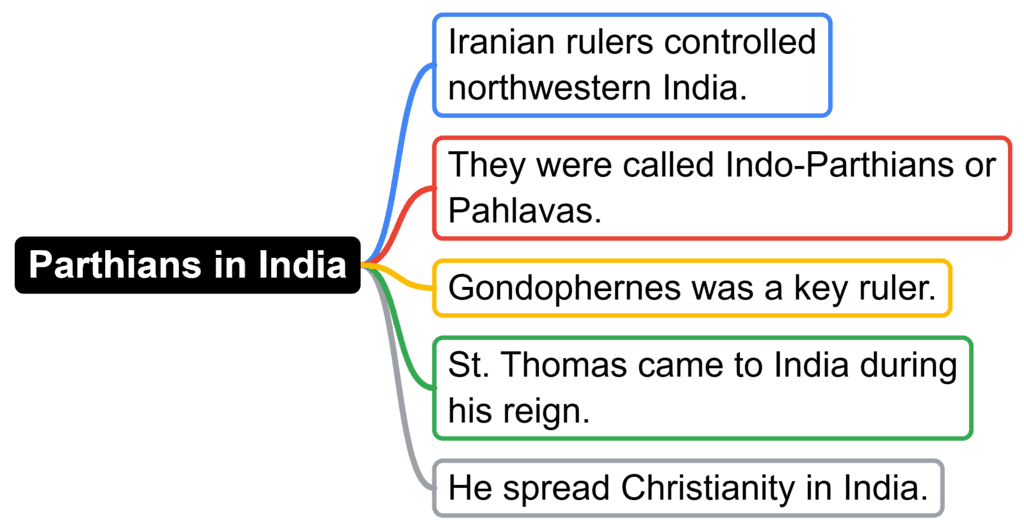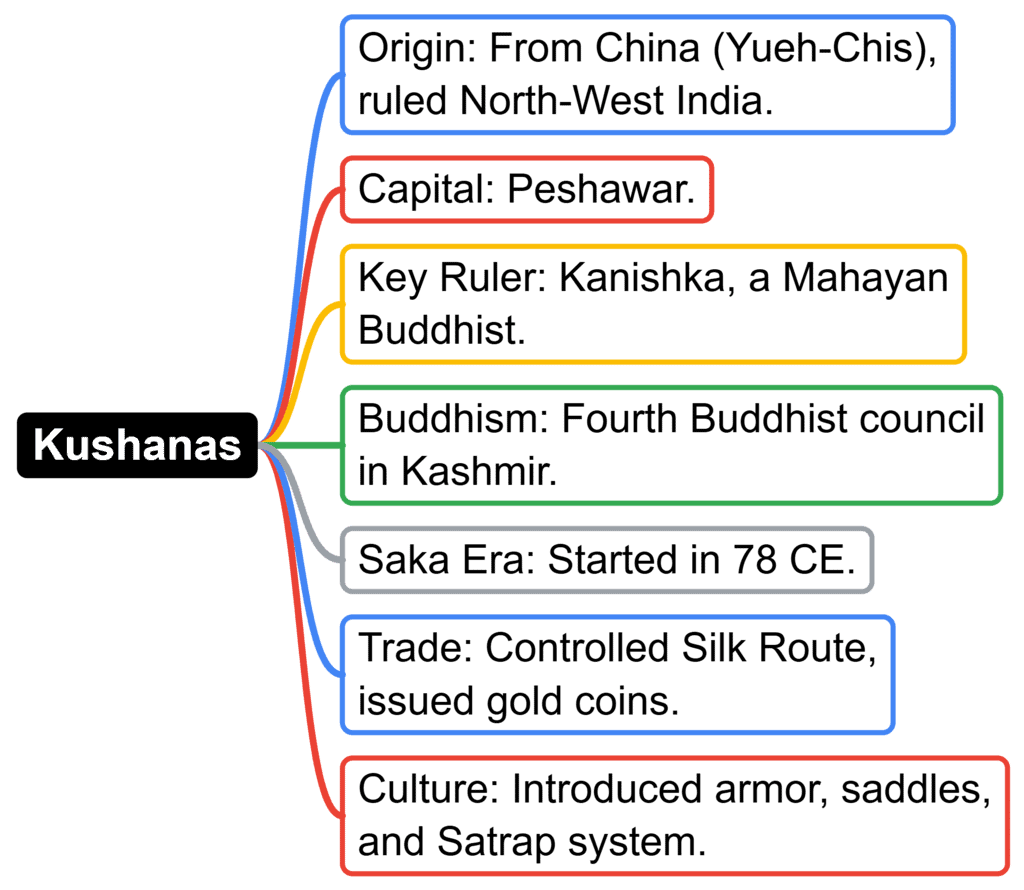SSC CGL Exam > SSC CGL Notes > SSC CGL Tier 2 - Study Material, Online Tests, Previous Year > Post Mauryan Period (200 BC-300 AD)
Post Mauryan Period (200 BC-300 AD) | SSC CGL Tier 2 - Study Material, Online Tests, Previous Year PDF Download
Shunga Dynasty (187 BC – 78 BC)
- Capital located at Patliputra, with a secondary capital at Vidisha under the viceroyship of Agnimitra's son.
- Pushyamitra Shunga defended the Gangetic valley and its culture against foreign invasions, particularly Greeks.
- Bharhut stupa was erected by Pushyamitra Shunga, symbolizing cultural resilience.
- Agnimitra, Pushyamitra's son, succeeded him as the ruler.
- Kalidasa's play 'Malvikagnimitra' narrates the love story between King Agnimitra and the handmaiden Malvika.
- Vasumitra, son of Agnimitra, successfully thwarted the attempt of Demetrius I of Bactria to penetrate into India.
- The 'Ashwamedh' sacrifice was performed under Shunga rule for the revival of Brahmanical order. Scholars like Patanjali and Manu were patronized.

- After Agnimitra, Vasumitra ascended to the throne, followed by seven more kings from the same dynasty.
- Shunga's empire encompassed regions such as Bihar, Bengal, Uttar Pradesh, and northern Madhya Pradesh.
- Devabhuti, the last ruler of the Shunga dynasty, was slain by Vasudeva, who established the Kanva Dynasty, ruling over eastern and central India.
- Shungas issued gold and silver coins, maintaining the administrative structure inherited from the Mauryans.
- Despite their patronage of Brahmanical order, the Shungas showed no antagonism towards Buddhism.
- Art and literature flourished under the Shungas, with the Mathura school of art achieving unprecedented realism.
- Notable compositions, including Manu's 'Manavdharmashastra' or 'Manusmriti' and Kalidasa's 'Malvikagnimitram,' are attributed to this period.
- The Yavanarajya inscription and Dhanadeva-Ayodhaya inscription provide historical mentions of the Shungas.
- Bharhut stupa was another architectural achievement erected during Pushyamitra Shunga's reign.
Satvahanas: Unraveling the Political, Administrative, Artistic, and Cultural Dimensions
Political Set Up
- Andhras in the Puranas
- The Satvahanas, often referred to as "Andhras" in the Puranas, emerged as a prominent dynasty.
- Founder and Capitals
- Founded by Simuka, the dynasty rose to prominence in the first century BC.
- Primary capital: Pratishthana (modern Paithan in Maharashtra) on the Godavari river.
- Second capital: Amravati.

- Graves and Conquests
- Satvahana graves, encircled by large stones, are recognized as megalithic, reflecting burial practices.
- Conquests included the regions of Gujrat and Malawa, as evidenced by the Nasik inscription of Nainikat.
- Key Rulers
- Gautamiputra Satkarni, also known as Ekabrahmana, achieved significant victories against Sakas, Greeks, Parthians, and Nahapana.
- Transition and Decline
- Rudradaman seized opportunities arising from the weakened successors of Gautamiputra Satkarni.
- Yajnasut Alakrni reclaimed territories in Gujarat, Malawa, and Andhra.
- Satvahana power declined, eventually replaced by the Vakataka Dynasty in the same regions.
Adminsitration
- District Officers and Feudalism
- 'Amatyas' and 'Mahamatras' served as district officers during the Satvahana rule, known as 'Ahara.'
- Kings' land donations to Brahmins and administrative officers contributed to the rise of feudalism.
- Military Camps and Upholding Dharma
- Gaulmika administered rural areas, while Katakas and Skandhvaras oversaw military camps.
- The king during Satvahanas' reign was expected to uphold Dharma, as guided by Dharmashastras.
Art & Architecture

Economy
- Coinage and Metal Usage
- Satvahanas issued coins (Karshapanas) in various metals, including Silver, Gold, Copper, Lead, and Potin.
- They were the first native rulers to feature their own portraits on coins.
- Agricultural Practices
- Common agricultural practices included paddy transplantation, cotton production, and the exploitation of iron ores in locations such as Karimnagar and Warangal.
Society and Religion
- Revival of Brahmanism
- Satvahanas played a pivotal role in the revival of Brahmanism.
- Matrilineal Naming and Religious Practices
- Many kings were named after their mothers, reflecting matrilineal societal norms.
- Alongside Brahmanism, the worship of Krishna and Vasudeva became common with the flourishing of Mahayan Buddhism.
Literature

Indo-Greeks (200 BC – 100 CE)
Branches of Rule
- Indo-Greek rule in India manifested in three branches: Bactria (North Afghanistan), Taxila (Takshashila), and Sakal or Sialkot (now in Pakistan).
Cultural Exchange at Taxila
- Heliodorus, an ambassador from the Taxila branch, was sent to the court of the King of Vidisha.
- He erected a stone pillar in Greek style, distinct from Asokan style, dedicated to Lord Vasudeva.
Rulers and Buddhist Influence
- Significant rulers from the Sakal or Sialkot branch, including Demetrious and Menander (Milind), played a pivotal role.
- Menander adopted Buddhism under Nagasen, contributing to the Sanskrit text "MILINDPANHO," a valuable historical source.
Challenge to Ganga Valley Kings
- The Sakal branch posed challenges to the kings of Ganga Valley, including the Mauryans and Shungas.
Numismatic Innovations
- Indo-Greeks were trailblazers, issuing gold coins featuring inscriptions of images of both kings and gods.
- India adopted the use of curtains (yavan) from Greek influence.
Governance and Cultural Integration
- The Indo-Greeks embraced Indian social and religious practices, demonstrating a process of indigenization.
- Technical advancements in metallurgy, medicine, astronomy, stone-cutting, and perfume-making showcased their cultural assimilation.
Patronage of Buddhism and Hinduism
- Indo-Greeks made significant contributions to the development of the Gandhara School of Art, blending Greek techniques with Buddhist themes (Greeko-Buddhist Art).
- Key sites of this artistic development included Taxila, Peshawar, Bactria, Bamiyan, Hadda in Afghanistan, and Baigram in Kashmir.
Artistic Features in Gandhara School
- Images of Buddha and Bodhisattvas depicted with muscular bodies, beards, and mustaches.
- Greek Gods and Kings were also portrayed in the artwork.
- Characteristics like the use of grey sandstone, outer robes (Roman influence), facial images, and andromorphic (human form) Gods reflected the amalgamation of Greek and Indian influences in the Gandhara School of Art.
Parthians: Iranian Influence and Christian Propagation

Sakas (100 BC – 150 CE): Warriors and Indianization
Origin and Early Kings
- The Sakas, also known as Scythians, hailed from Western China.
- Maues or Moga, around 80 BC, was the first notable Saka king, ruling as a 'Satrapas' (governor) and 'Mahasatrapas.'
Centers of Saka Rule
- Mathura, Ujjain, and Girnar served as key centers for Saka rulers in northern India.
- They exerted influence over the western Ganga valley, parts of central India, and Gujarat.
Rudradaman and Indianization
- Rudradaman of Ujjain, mentioned in the Junagarh inscription, played a significant role.
- He repaired the Sudarshan lake for improved irrigation and adopted Sanskrit for inscriptions.
Art and Culture Patronage
- Saka rulers, while at war with Satvahanas, patronized Indian art and culture, leading to their Indianization.
- Artistic development flourished in Sanchi, Mathura, and Gandhara.
Vikramaditya and Vikram Samvat
- The King of Ujjain defeated the Sakas, assumed the title of 'Vikramaditya,' and established the Vikram Samvat era in 58 CE.
Kushanas (50 CE – 230 CE): Silk Route Rulers and Buddhist Contributions

The document Post Mauryan Period (200 BC-300 AD) | SSC CGL Tier 2 - Study Material, Online Tests, Previous Year is a part of the SSC CGL Course SSC CGL Tier 2 - Study Material, Online Tests, Previous Year.
All you need of SSC CGL at this link: SSC CGL
|
1334 videos|1437 docs|834 tests
|
FAQs on Post Mauryan Period (200 BC-300 AD) - SSC CGL Tier 2 - Study Material, Online Tests, Previous Year
| 1. What were the key characteristics of the Shunga Dynasty and its impact on Indian culture? |  |
Ans. The Shunga Dynasty (187 BC – 78 BC) is known for its significant contributions to art, culture, and administration in ancient India. It emerged after the Mauryan Empire and played a crucial role in promoting Buddhism and Hinduism. The Shungas are particularly noted for their patronage of the arts, exemplified by the exquisite sculptures and stupas at sites like Sanchi. They also established a strong administrative framework that influenced subsequent dynasties.
| 2. How did the Satavahana dynasty contribute to the political landscape of ancient India? |  |
Ans. The Satavahana dynasty (circa 200 BC – 300 AD) was instrumental in establishing a decentralized political structure in ancient India. They ruled over a vast territory and facilitated trade, especially along the Deccan region. The Satavahanas are known for their support of Buddhism and the arts, including the creation of significant rock-cut caves and stupas. Their rule marked a period of cultural synthesis between various communities, enhancing trade relations with the Roman Empire and other regions.
| 3. What role did the Indo-Greeks play in the cultural exchanges between India and the Hellenistic world? |  |
Ans. The Indo-Greeks (200 BC – 100 CE) were crucial in the cultural exchange between India and the Hellenistic world. They introduced Greek art and coinage into India, which led to a fusion of artistic styles seen in sculptures and architecture. The patronage of Buddhism by Indo-Greek rulers, such as Menander, further facilitated the spread of Buddhist teachings and texts, creating a rich tapestry of cultural interactions that influenced both regions.
| 4. How did the Sakas influence Indian society during their rule? |  |
Ans. The Sakas (100 BC – 150 CE) were known for their warrior ethos and played a significant role in the political and cultural landscape of India. They assimilated into Indian society, adopting local customs and languages, which is known as Indianization. Their rule led to increased trade, particularly along the Silk Route, and they contributed to the spread of Buddhism and Hinduism. The Sakas also left a lasting impact on coinage and are credited with introducing new artistic motifs.
| 5. What were the contributions of the Kushanas to Buddhism and trade in ancient India? |  |
Ans. The Kushanas (50 CE – 230 CE) were prominent rulers along the Silk Route and are credited with significant contributions to Buddhism. They played a pivotal role in spreading Buddhist teachings across Central Asia and into China. Under rulers like Kanishka, the Kushanas promoted the construction of monasteries and stupas, facilitating the growth of Buddhist art and literature. Their control over trade routes enhanced commerce, leading to economic prosperity and cultural exchanges between India and other civilizations.
Related Searches





















